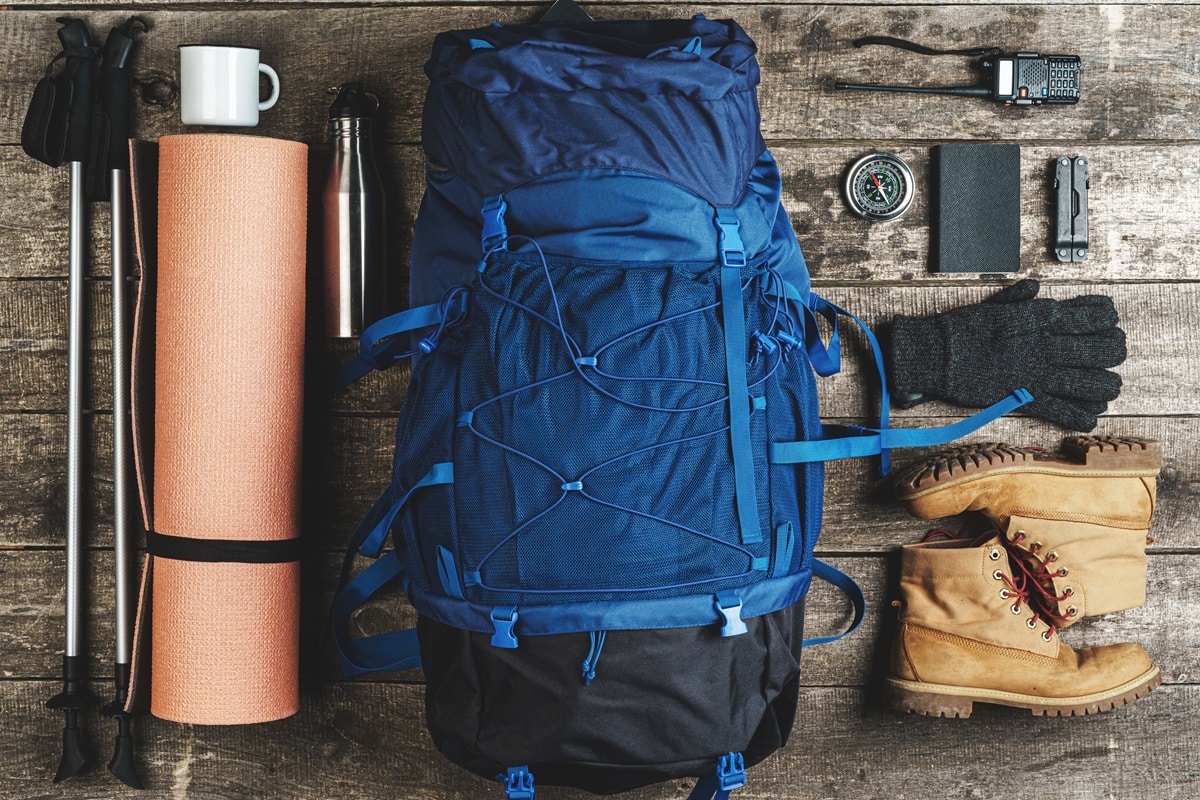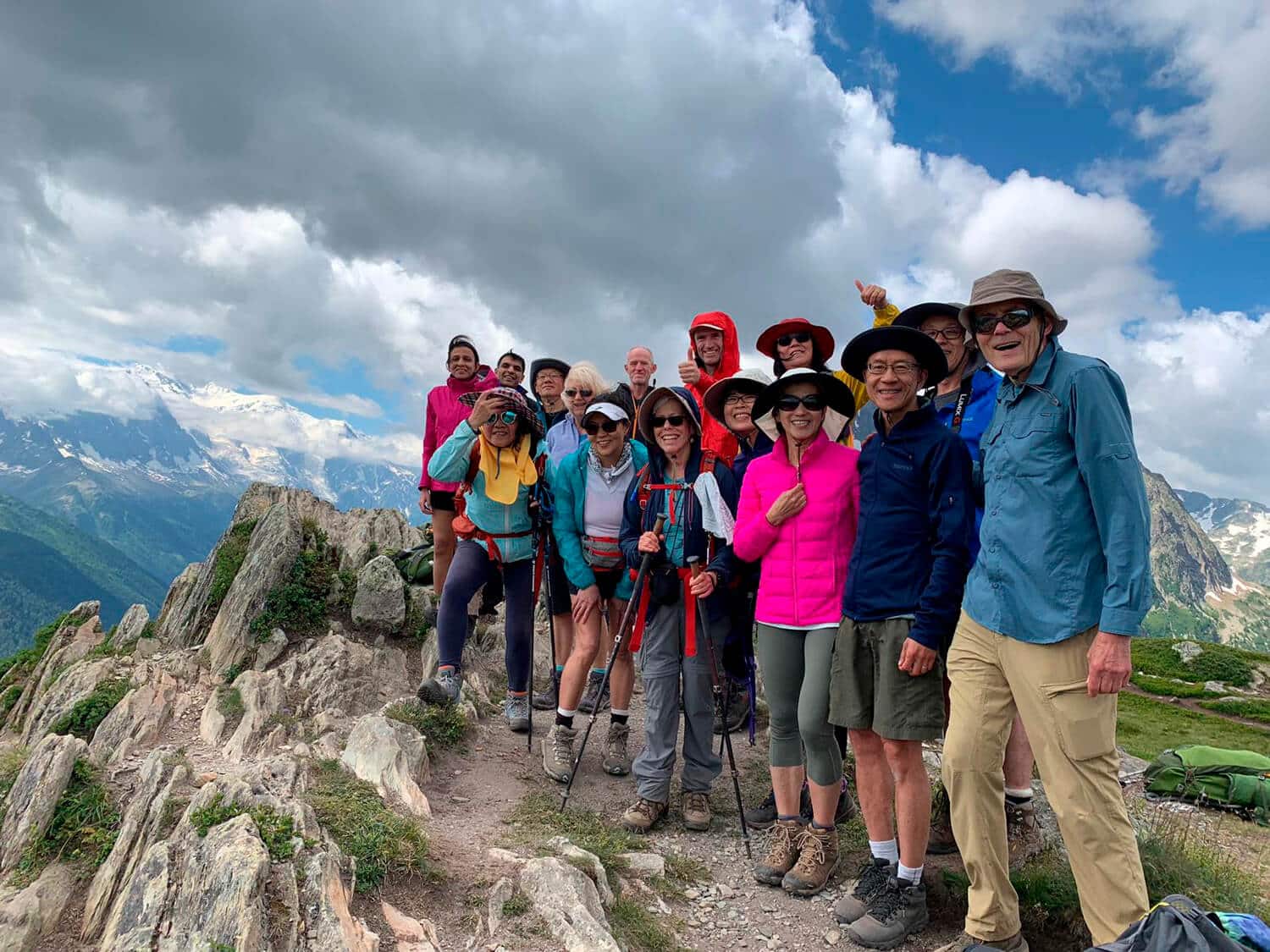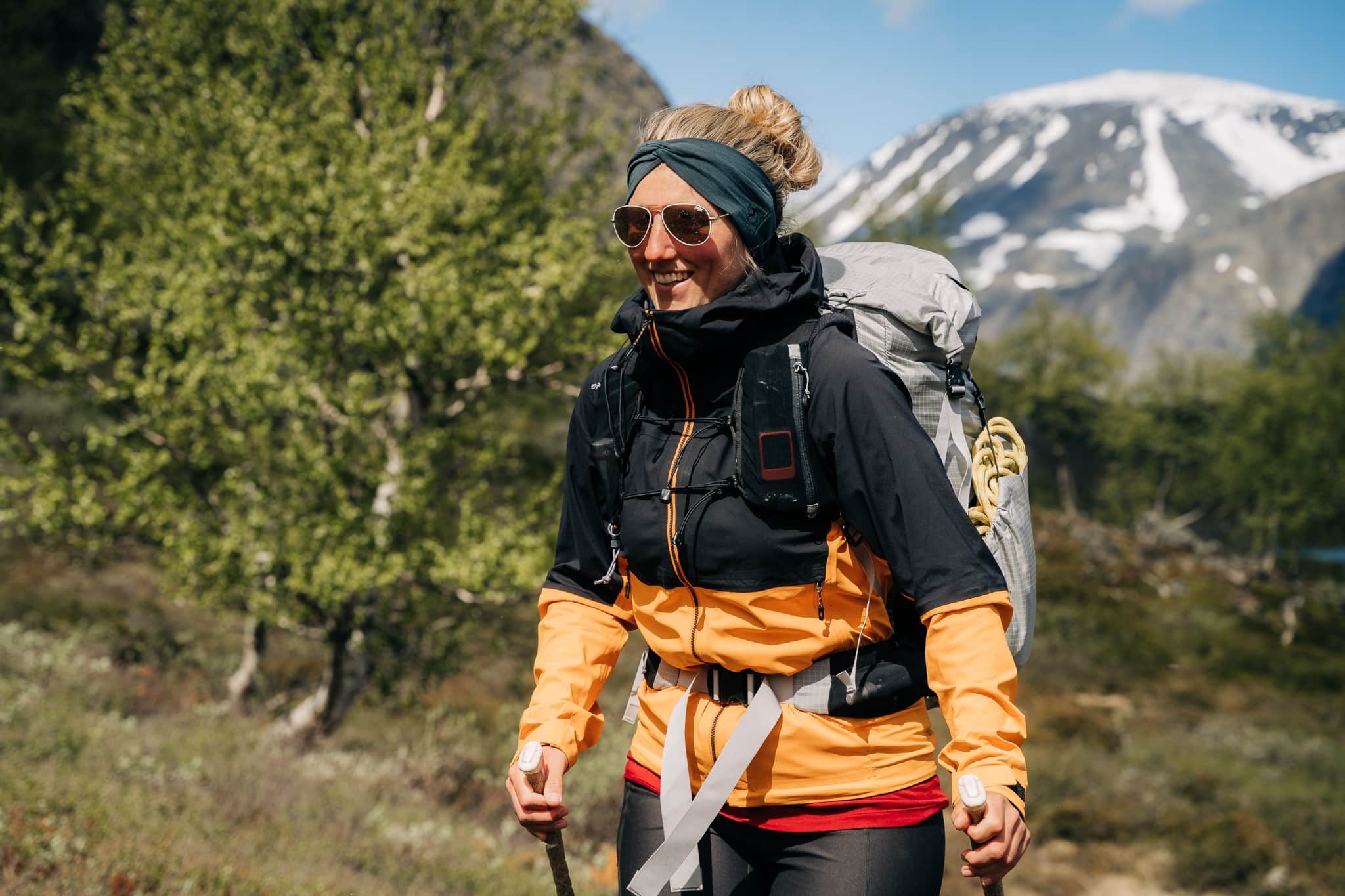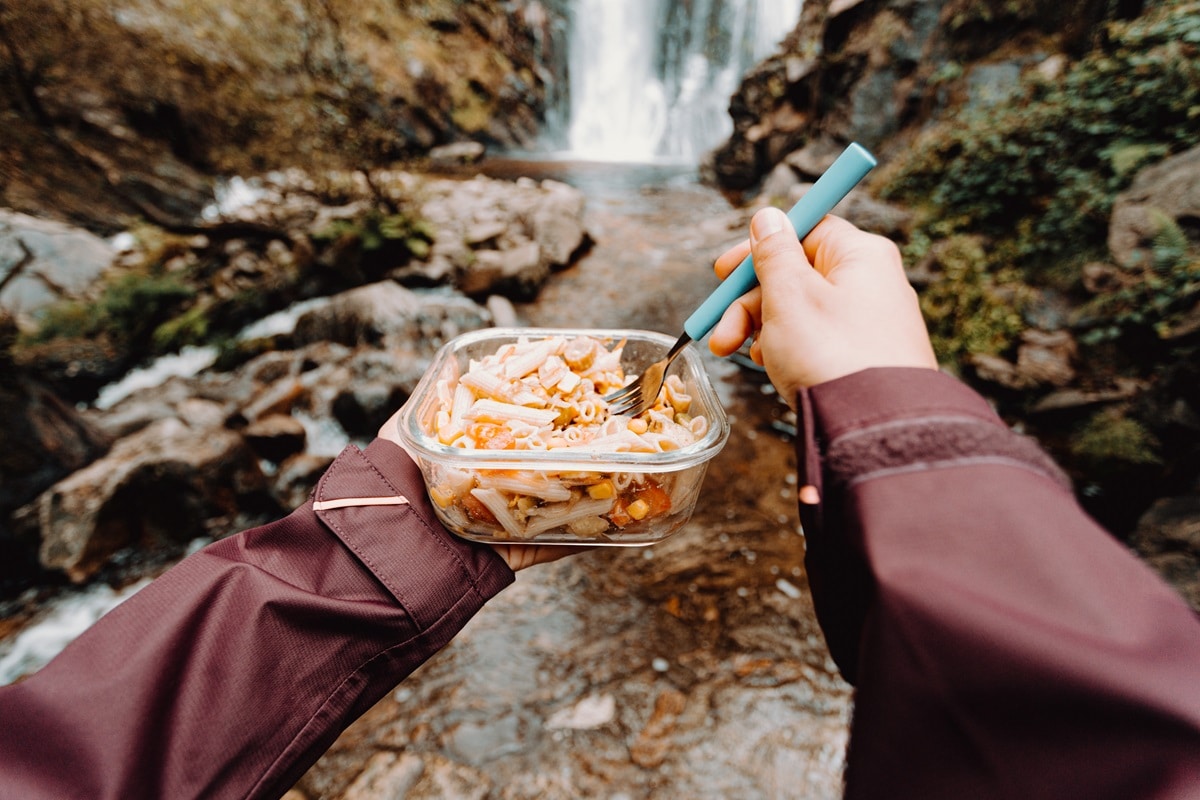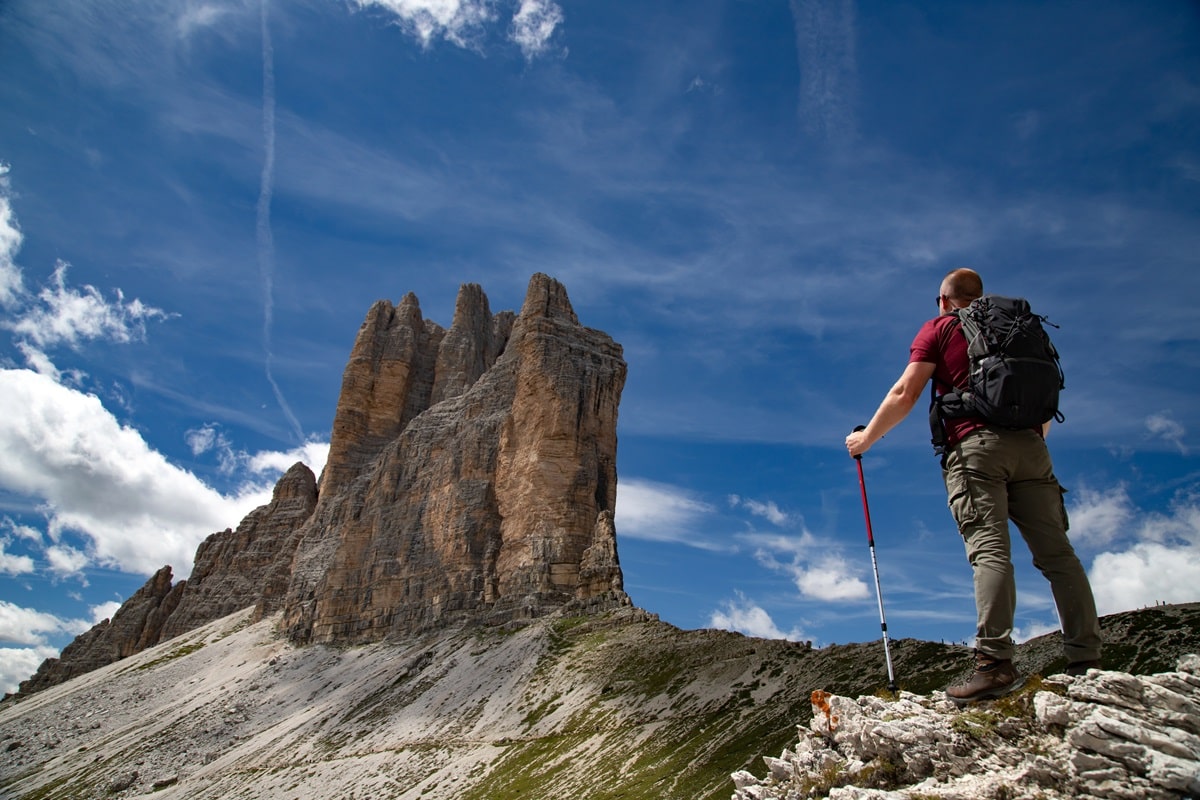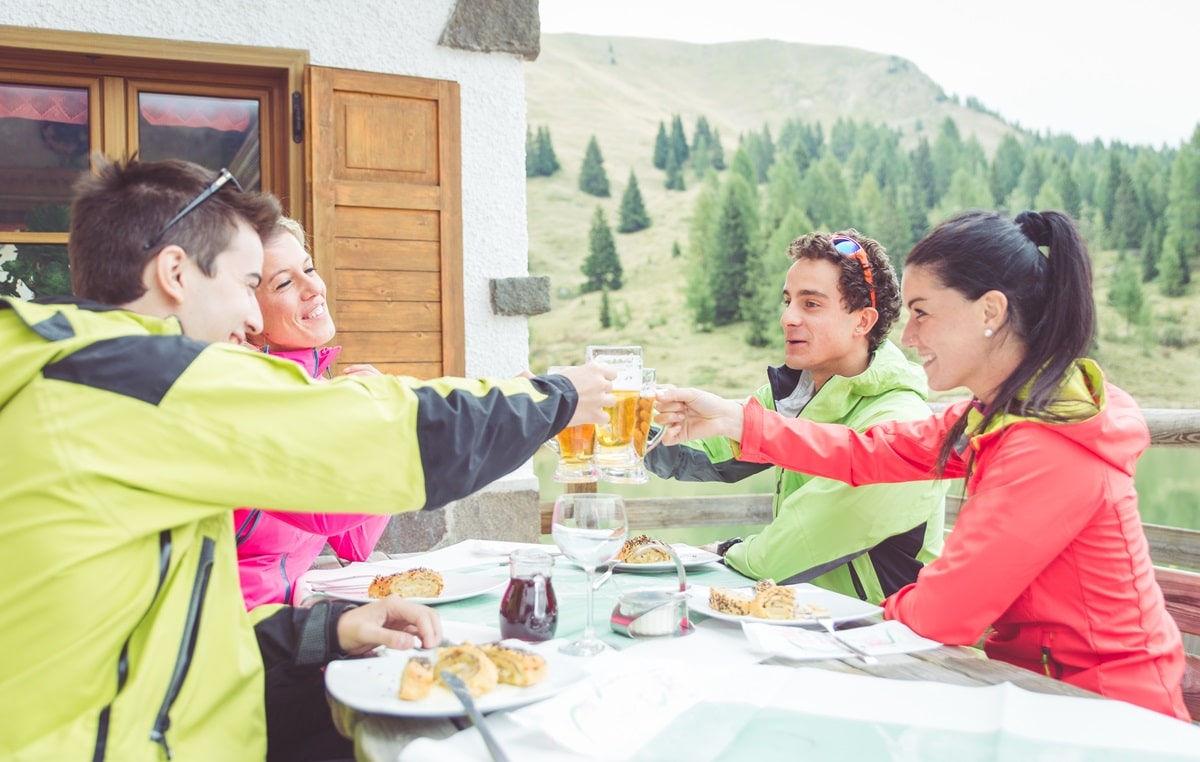What are you carrying?
As a leader, I am often asked by members of our groups exactly why my rucksack is much bigger and heavier, “Just what are you carrying?”
Well here we are, here’s my pack opened for all to see:
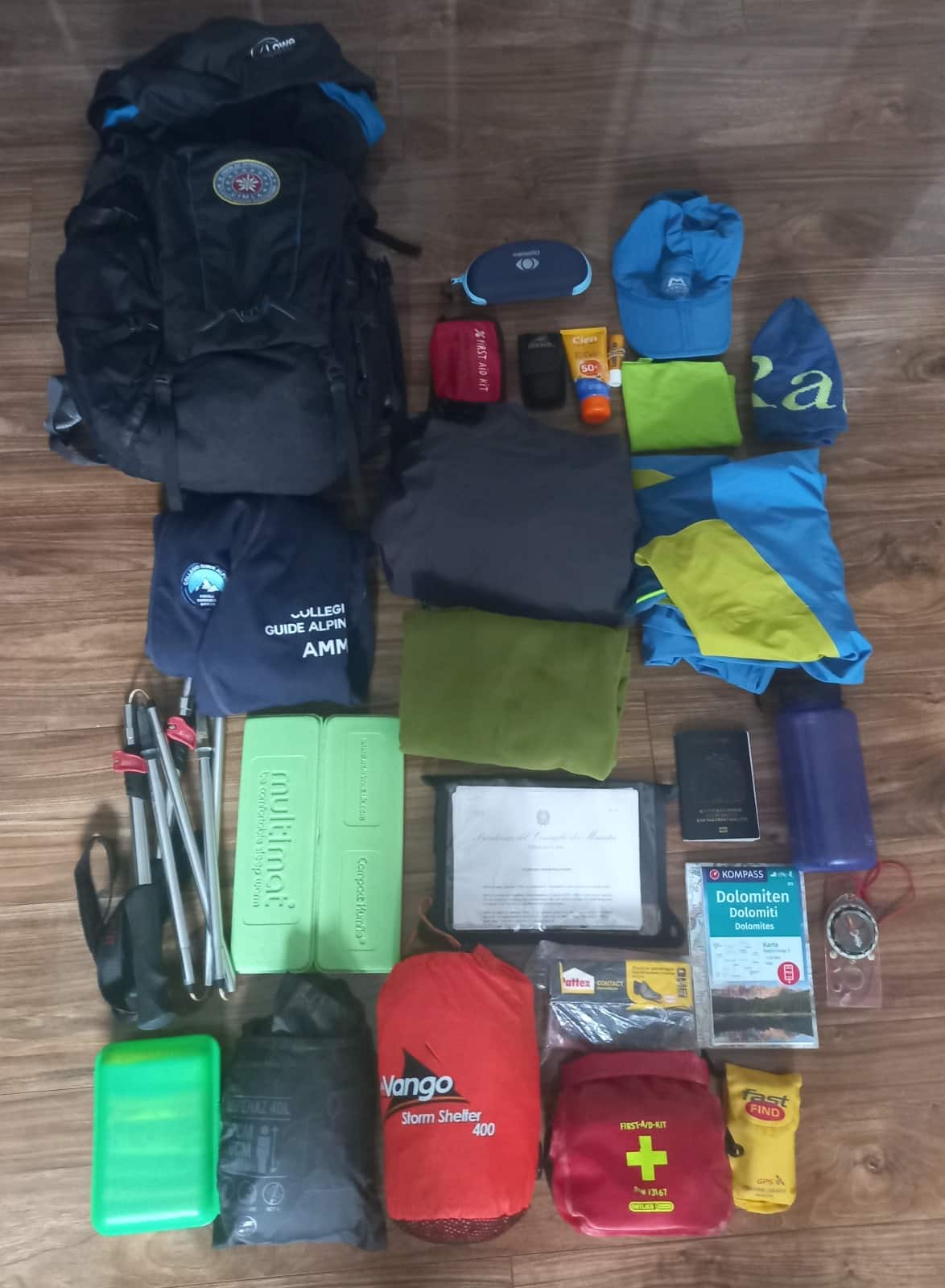
Pack Capacity
My pack has a capacity of around 30 to 35 litres and when full will weigh around 12kg I imagine (I never weigh it as I need to carry it regardless of weight!)
First Aid Kit
This is usually buried at the bottom of my pack and is comprehensive. It has items for all likely injuries from which a trekker might suffer. It is partnered with an ‘ouch pouch’ which is at hand at the top of my pack and is there for minor injuries such as small cuts and blisters. Why is it so low down you might ask? My pack has a quick lower access side zip, plus it is rarely needed so is there, safe and out of the way of the more often used items such as snacks and sunscreen.
Repair Kit
Running repairs and emergency fixes are part of the job and this kit allows me to hold a boot sole in place (a remarkably frequent event in the Dolomites – a place that is none-too-kind on boots!) as well as provide a spare boot lace, zip ties and duct tape to temporarily fix a broken zip or patch a torn jacket and a small sewing kit. In winter it will also have emergency repair items for snowshoes.
Group Shelter
An item to keep the group, or an injured member of the group, protected from the weather. This item can also be used as a dining table (Ever been on my Dolomites trips with their legendary picnics?) or a stretcher to carry someone to a more comfortable situation whilst awaiting rescue. Its bright colour will also assist in helicopter rescue.
PLB (Personal Location Beacon)
A Personal Location Beacon is for emergencies requiring external assistance. On activation it automatically contacts emergency services via satellite and continually transmits its location until help arrives. Oddly, UK registration is via Coastguard in Falmouth!
Phone and Powerpack
A 5000mA phone charger which means I won’t ever suffer a flat battery, essential for communications in event of an emergency.
Navigation Pack
Local maps, a compass and a waterproof map case. Although we know our way as guides old fashioned, no-electronic navigation is always our back up plan.
Spare Clothing
A spare warm layer is always buried deep inside my pack, just in case someone forgot theirs!
Waterproofs
A fully waterproof jacket and overtrousers are always in there! Maybe it is my British walking heritage, maybe it is my ‘plan for the worst, hope for the best’ approach but full waterproofs are always there. My overtrouser’s legs are unzipped, ready to pull over my boots.
Poncho
My preferred waterproof for trekking as it completely covers my pack as well as me. Not great in high winds (waterproofs are best then!) but a superb addition for most trekking weather.
Admin Pack
Copies of my professional documents, insurance, passport are there, all in a waterproof pack.
Multi-tool
A multitool knife is a godsend for repairs, first aid and slicing tomatoes!
Jacket
A fleece jacket is in there in case it is cold (obviously we aim for every day to be sunny and warm!)
Sun Protection
I always have my prescription, wrap around sunglasses with me – either my photochromatic ones or a polarised pair for very high sunlight levels encountered with snow reflection.
- Decent sunscreen – at least Factor 30, usually Factor 50 and lip protection too
- Sun hat – either my trusted Tilley hat, or if it might be rainy, a baseball hat which also helps to keep the jacket hood out of my eyes.
Snacks
Essential trail refuelling! I prefer items that won’t melt in the sun (but do love a chocolate bar, even one that’s been through a few freeze-thaw cycles!)
Water
A tough, unbreakable bottle is my first choice. Bladders have let me down a few times and are at risk of damage from sharp things in my pack (as well as my tendency to push and shove things into my pack!)
Wallet
Absolutely essential! Along with the company payment card for ferries, buses and other “on the hoof purchases”. Apparently, a round of drinks for 16 isn’t included!
Buff
An incredibly versatile item – it can be a hat, a neck warmer, a bandana or headband. It can also serve in a number of emergency situations including bandage and tourniquet! (I use one when teaching first aid to demonstrate impromptu first aid techniques)
Sit Mat
Turns any stone wall, rock or log into a more comfortable perch for a quick stop or lunch break.
Lunch
Absolutely essential for the afternoon legs!
Trekking Poles
Dinky fold up poles that fit inside my pack are a must just in case someone needs a helping hand.
Additional Items
Some other items might be conditions dependent such as additional water, or maybe an ice axe for early season conditions along with warm gloves and a warmer jacket.
Packing Tips
Everything should be packed in water resistant bags to guard against the unexpected downpour or water leak from a bottle or bladder.
Conclusion
So, there we are, my pack, ready for another group on another adventure. Are you coming?
